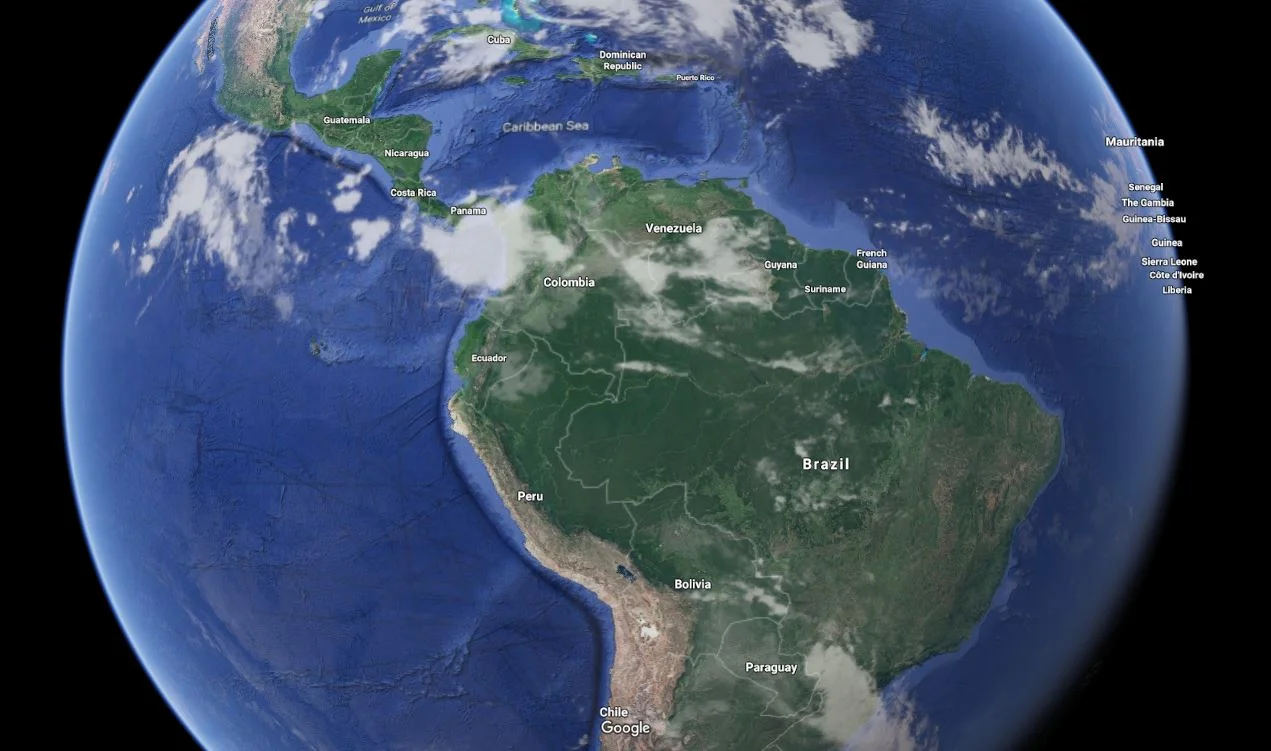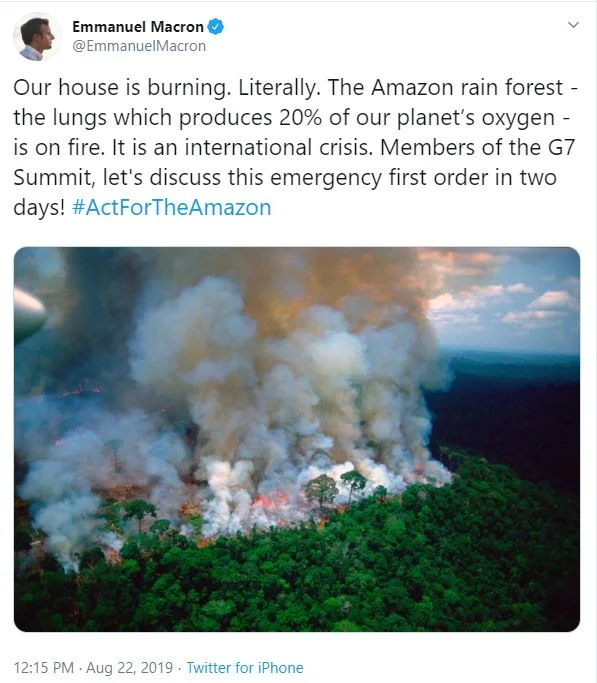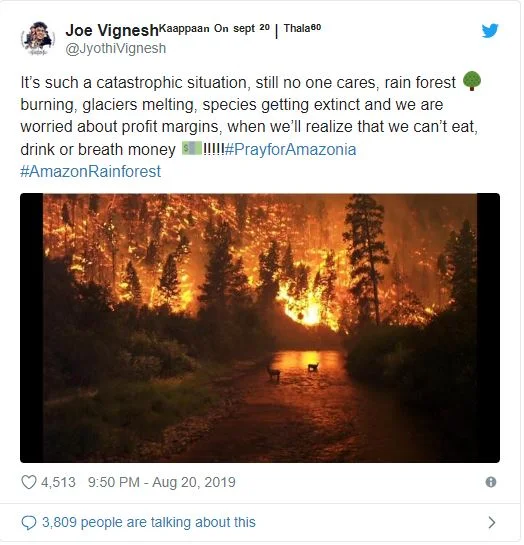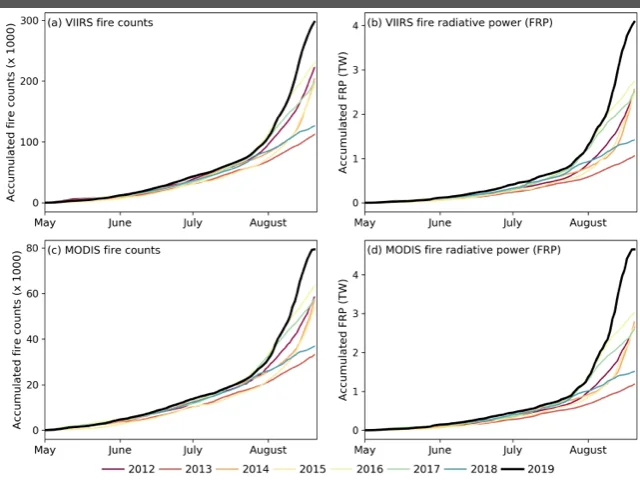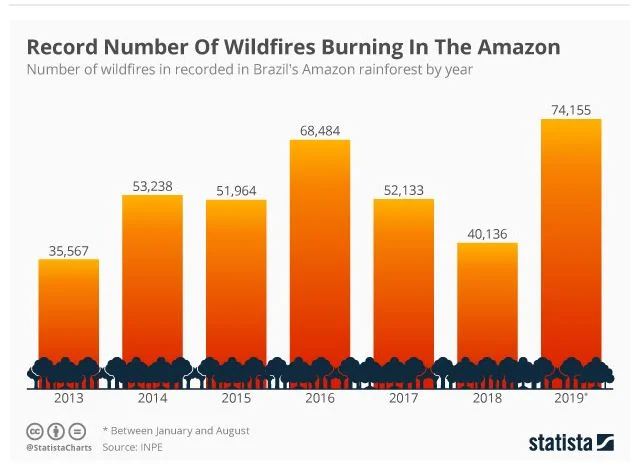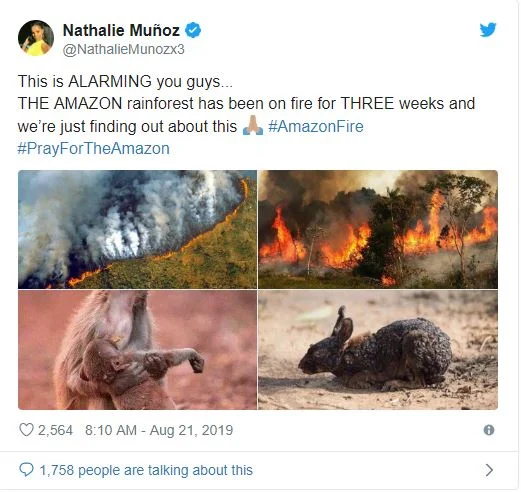Apocalypse Amazon: How the media feeds a 'first world' doomsday fix
Brazil’s new president has emboldened loggers, but the destruction is far less than in decades past
By Tatiana Prophet
editor@back2facts.com
A Google maps image shows just how vast the Amazon rainforest is.
PLANET EARTH — The headlines and photos of conflagration and destruction crackled across our devices on August 20. Reuters reported:
Amazon burning: Brazil reports record forest fires
”Wildfires raging in the Amazon rainforest have jumped this year, with 72,843 fires detected so far by Brazil’s space research centre INPE, as concerns grow over right-wing President Jair Bolsonaro’s environmental policy.”
Reuters actually ran a correction on the story, qualifying the “record fires” statement with an added “since 2010.” Other articles stated “since record keeping began.” But many sites carried the original story, and in the case of Euro News, the error is still up. So is Emmanuel Macron’s tweet below, which contains a photo from 1999. (Celebrity Jaden Smith shared a photo from 1989).
This photo of the Amazon rain forest was taken by National Geographic photographer Loren McIntyre in 1999.
First-world environmentalists, coastal elites and corn-fed conservatives alike all decried this devastating news, so importune in a world that’s desperate to hear something good.
Yet the news also created more polarization worldwide, as social media users began to follow Reuters’ lead and shape the Amazon story into a referendum on Trump and his “far-right” mini-me, Bolsonaro (who horrified U.S. liberals when they became aware of homophobic remarks he had made, and his all-around general offensiveness, being ex military, etc). Many Back to Facts readers were under impression that FOX News and Breitbart were deliberately blocking out the news, and further, that Trump supporters didn’t care about the Amazon burning (which turned out to be false).
Celebrities and average people began sharing photos on Twitter of apocalyptic destruction: two deer standing in a river with the mountain ablaze behind them. That photo was taken in a Montana forest fire in the year 2000.
This is a photo of a devastating fire in the Bitterroot Mountains of Montana taken in the year 2000.
Cnet’s practical guide to spotting inaccurate photo images online
Something was wrong with this story from the beginning, in my mind. It wasn’t just the loaded political words tying the crisis to Trump; it was the idea that these were record fires. So I decided to go back to the raw data. A few things I found:
1) The fire count shared by Brazil’s space agency is from NASA. NASA was quoted in the original Reuters story as saying the this years fire season was “just below average.” Wow, it’s rare to find data in an article that directly contradicts a headline, but becoming less rare in this era of devastating competition for your attention. That statement by NASA was repeated in a New York Times article attempting balance; but toward the end, the article manages to put an unprovable spin about fires being worse these days because of climate change.
The Moderate Resolution Imaging Spectroradiometer (MODIS) sensor onboard NASA’s Terra and Aqua satellites has been used to scan the Earth’s surface for fires on a daily basis for almost 15 years. Since 2012, the Visible Infrared Imaging Radiometer Suite (VIIRS) onboard the Suomi NPP satellite has contributed to this effort by producing higher resolution images of the Earth’s surface. (Info from United Nations Office for Outer Space Affairs).
2) The graphs shared by most media outlets that show this year’s fires are deceptive, with the scale of the graph very small, so that any fluctuation appears unusually large. Here is another graph showing how the 2019 numbers stack up when you look at the entire year:
The scale of this graph is momumentally larger than the four graphs above it. You can see that the top of the scale is 500,000 fires, reached somewhere between 2003 and 2010.
This deforestation graph becomes almost meaningless without 2019 year-to-date numbers (not included). But the caption says that destruction of the rain forest has increased rapidly since the new “far-right” president took over. It’s true, he has slashed budgets for enforcement of fines for illegal logging; but still - the acceleration in logging is coming from an extremely low baseline thanks to regulations in Brazil that require ranchers, for example, to leave 80 percent of their land untouched.
3) Media hype is standing in the way of solutions for this important resource - the Amazon rain forest. The spin of media outlets such as Reuters and The New York Times is grossly irresponsible. That said, we must have alarm if we are to do the right thing for the sustainability of the planet. Putting these numbers in perspective is a start. Saying no to polarization is another essential step.
One exception to the hype is the Wall Street Journal’s recent article, which is a good example of a balanced news piece. This article doesn’t hold back on the facts regarding Bolsonaro’s actions; while at the same time, it puts the whole situation in perspective, pushing back on the narrative that we’re all gonna die as the earth burns up like one giant ignited match head.
If you only look at the last six years, the graph looks extremely different.
Note: acreage burned is only counted through July. Perspective.
The photo of the monkey crying, holding a smaller monkey, isn't in the Amazon. It was taken in Jabalpur, India, by Avinash Lodhi sometime in April 2016. And the photo of the burned rabbit is from the 2018 wildfire in Malibu, California.

